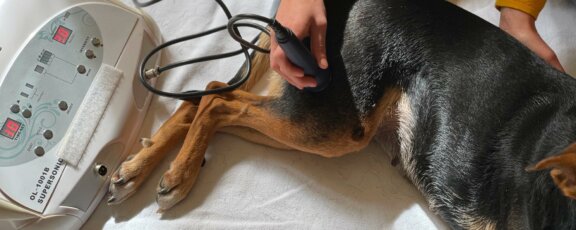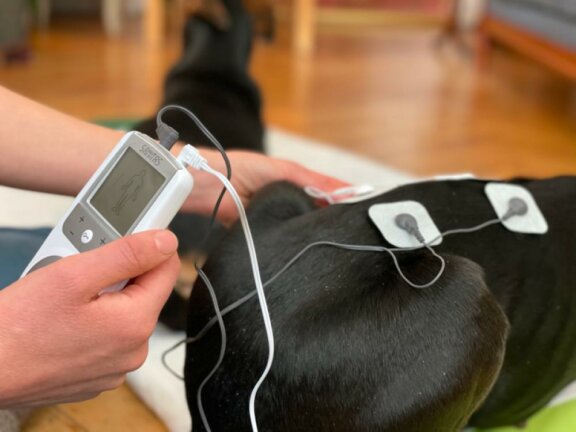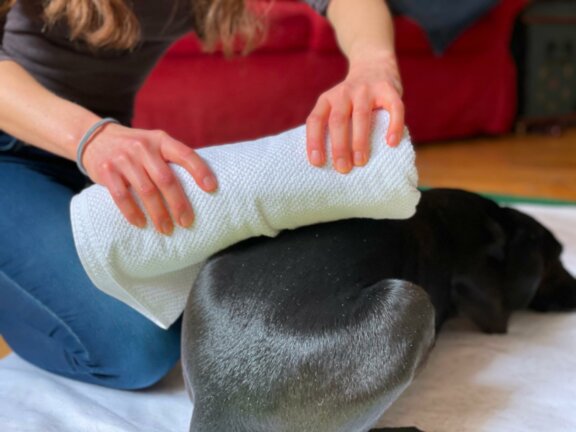Body stimulation using cold light energy
Low-level laser therapy (LLLT) is a non-invasive treatment method that uses low-level laser beams to stimulate specific areas of the body. These laser beams penetrate the skin and interact with the cells to achieve various positive effects. This therapy is often used to relieve pain, promote wound healing and improve cell function.
Low-level laser therapy offers a gentle and effective way to improve the quality of life of your dogs and horses. It ideally complements physiotherapeutic care and enables targeted treatment of pain, inflammation and other musculoskeletal problems.
Applications in animal physiotherapy:
1. Pain relief
Low-level laser therapy is ideal for relieving pain in dogs and horses. The laser light stimulates the release of endorphins, which leads to natural pain relief.
2. Anti-inflammation
The laser supports the reduction of inflammation by targeting pro-inflammatory processes. This is particularly beneficial for conditions such as arthritis or after injuries.
3. Accelerating wound healing
Low-level laser therapy promotes cell regeneration, which can contribute to faster and more efficient wound healing. This is particularly important after surgical procedures or injuries.
4. Muscle relaxation and regeneration
Targeted application of the laser can support muscle relaxation and promote regeneration after sporting activities or intensive strain.





